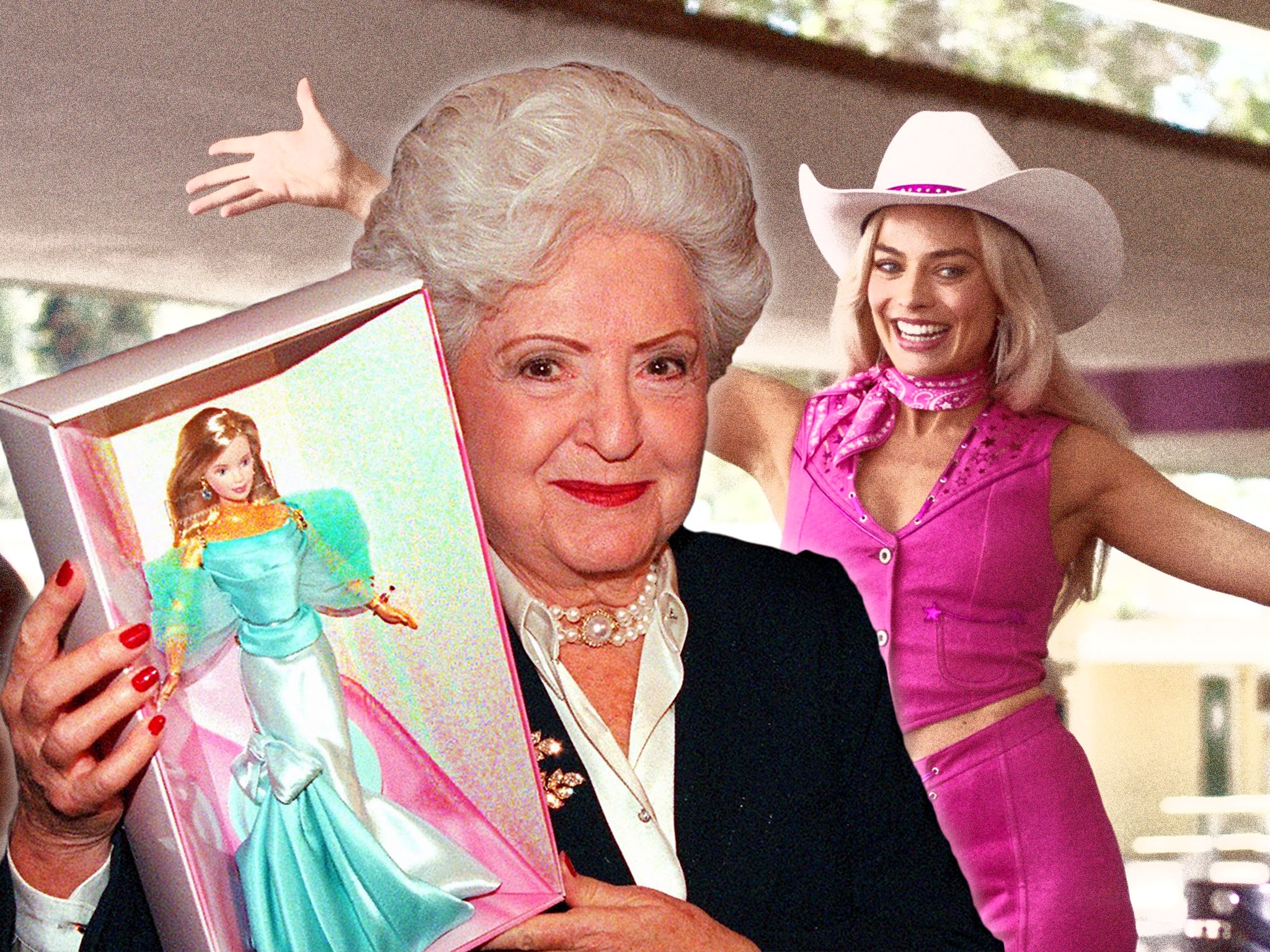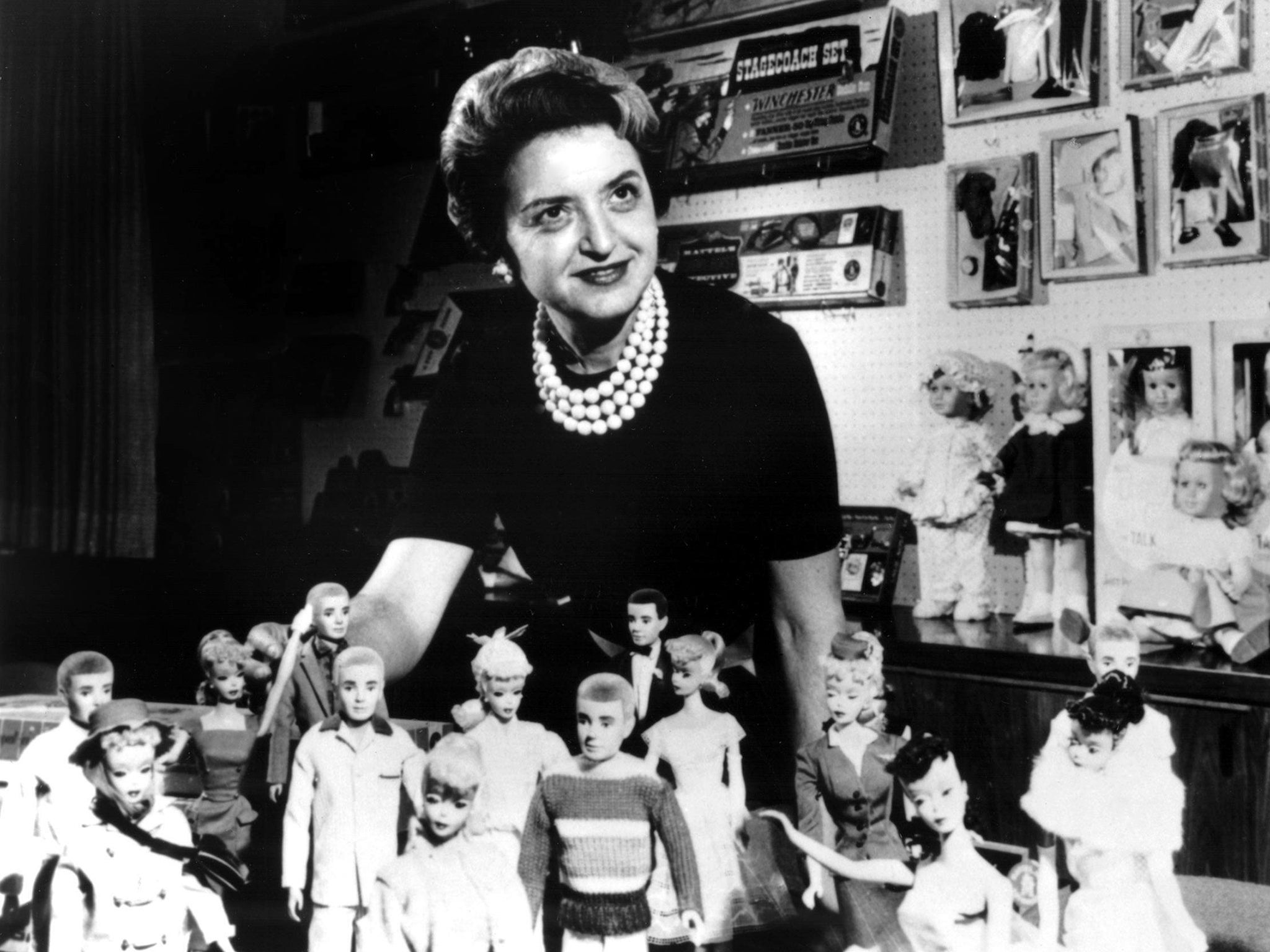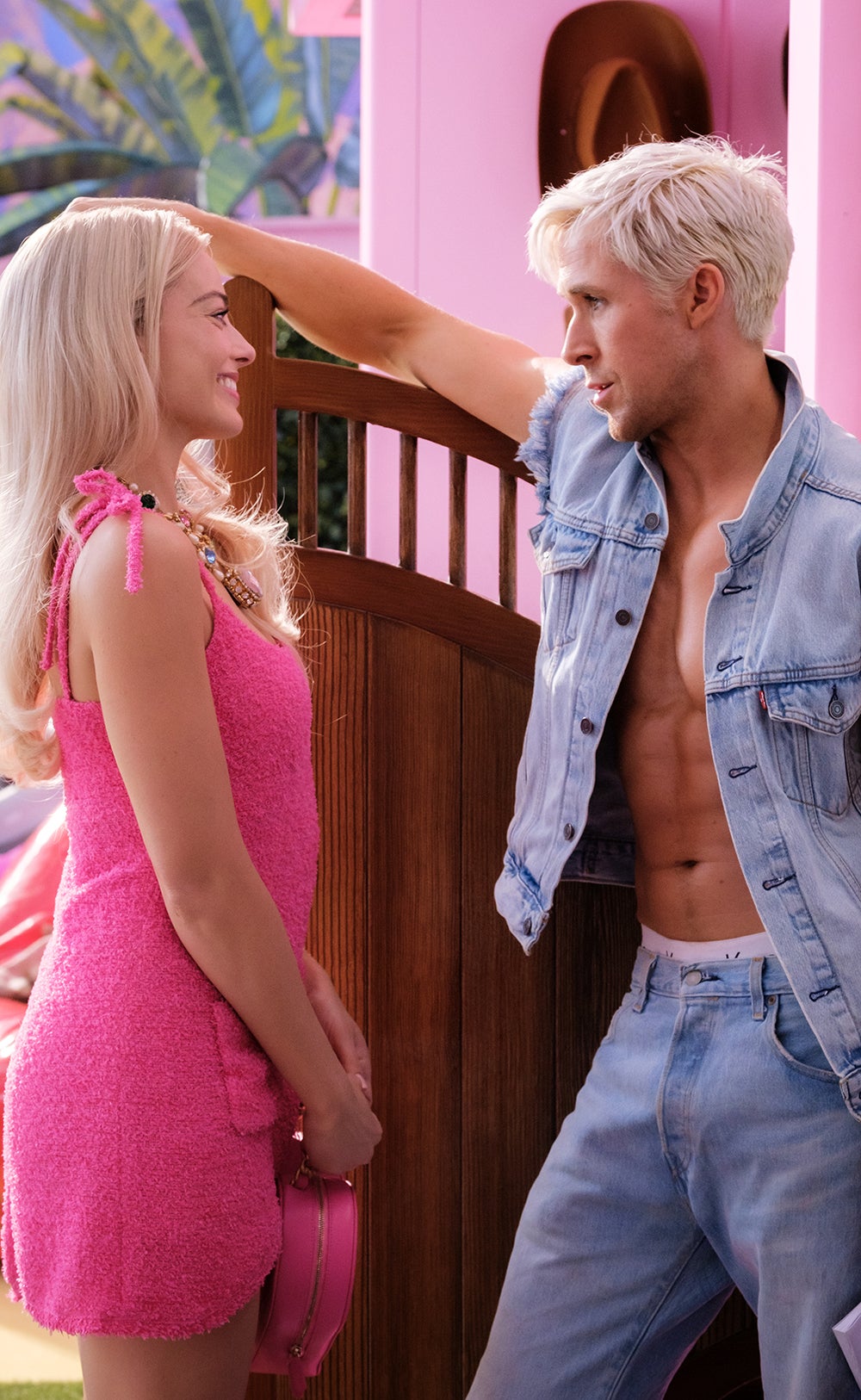The remarkable life of Barbie creator Ruth Handler
After giving birth to two children – Barbara and Kenneth – a Los Angeles businesswoman got to work inventing the most famous plastic lady in toy history. As Ruth Handler’s creation hits the big screen, Amanda Whiting digs into the remarkable life of one of America’s unheralded pioneers


Barbie wasn’t like other dolls in the toybox. When her controversially adult form – pink lips, dinky waist, big breasts – hit store shelves in 1959, she revolutionised play. Until then, “dolls” had meant “baby dolls” that invited just one mode of pretend: a little girl could imagine the dutiful mother or sister – the caretaker, really – she was expected to be.
Barbara Millicent Roberts, or “Barbie”, was different. A girl could daydream about the woman she would become, what job she would work or what clothes she would wear. A baby doll suggested one future; a Barbie doll suggested all of them. For all her specific and derided physical features – her whiteness, her blondeness, her thinness – she was also a blank sheet of paper. Which is just how Barbie’s mom intended it.
“The whole idea was that a little girl could dream dreams of growing up, and every grown-up that she saw had breasts,” said Ruth Handler, Barbie’s female inventor. Handler, who died in 2002, had to fight the prudish male execs at Mattel Toys for every perky millimetre.
By some cruel twist, breasts would become a recurring theme in Handler’s turbulent professional life. They would preoccupy her throughout the Seventies, just as Barbie’s anatomically impossible bust/waist/hip ratio had come to be lambasted by the doll’s feminist detractors. Handler was pushed out of Mattel in that decade. In 1978, she was indicted on federal conspiracy charges in the US.
All the while, Handler had privately been undergoing treatment for breast cancer, including a mastectomy. And when she couldn’t find a prosthetic breast to suit her, she founded her own brand, remoulding the female form for the second time. “Somehow, my life has revolved around breasts,” Handler said on American television matter-of-factly in 1994. Hers may not be a household name, but for Barbie diehards, Handler’s autograph has long been an eBay search term. Thanks to the glitzy new Barbie film hitting cinemas this week, the legacy of both the doll and its creator are up for grabs again.
Ruth Mosko was born in Denver, Colorado, in 1916 to Polish-Jewish immigrants. The youngest of ten children, she went on holiday to Los Angeles at age 19 and never flew home. In contravention of 1930s gender norms, it was Handler who sent word back to the Rockies for her high school sweetheart – art student Elliot Handler – to join her in Hollywood. They were married in 1938 and had two children: a daughter called Barbara, followed by a son whose name you can likely guess.
When Elliot joined Handler in California, the couple went into the furniture business. Elliot would handle design and fabrication; Handler would sell. That the company eventually evolved into Mattel Toys was down to Elliot, who diversified their already successful furniture business with a picture frame company, a toy piano and ukulele company, and even a line of dollhouse furniture. But it was Handler’s big idea that gave Mattel its first megahit.
Many women have a problem with their own bodies as they grow older. I cannot believe that the doll causes that
Now, there are a few versions of the Barbie origin story floating around, but some elements always remain the same. The most ironic being that little Ruthie hated playing with baby dolls when she was a kid; her daughter didn’t care for them either, preferring to play with paper dolls that came in teenage and adult likenesses and whose clothing – fastened on with paper tabs – could be easily interchanged. That’s element number one.
The second critical step toward the invention of the world’s most recognisable doll was a family trip to Europe. Ruth and Elliot took the kids to the Alps, where Ruth and Barbara spotted a German Bild Lilli doll in stores. Like Barbie, she was an adult-looking doll sold in several varieties. Frustratingly, though, Lilli’s clothes were not sold separately from the doll itself. If you wanted the new ski outfit, for example, you’d have to buy a whole ’nother Lilli.
Crucially, for Barbie to get off the ground, the doll needed someone like Handler. She was a working mother at a time when most mothers stayed at home. She was a female founder willing to go toe-to-toe with the rest of the male board, not to mention the male owners of toy shops, who weren’t convinced an adult-figured doll should be marketed to children in the first place. “Most of the buyers [for stores] were men, and some didn’t think women would want their daughters to have a doll with breasts! And they themselves didn’t want their daughters to have such a doll!” Hander explained to the Jewish women’s magazine Lilith. But when mothers saw Barbie in stores, she was vindicated. “When we first shipped the doll it just walked off the shelves.” Handler started driving around her neighbourhood in a pink Ford Thunderbird.

Barbie’s boyfriend Ken, named after the Handlers’ son, was introduced in 1961, followed by Barbie’s little sister, Skipper, in 1964. The first Barbie came dressed in a black and white chevron swimsuit, but soon more outfits followed and more storylines. In 1960, she became a pink-suited fashion designer toting a sketch portfolio. The next year she was a flight attendant in a pillbox hat, a nurse in cat-eyed glasses, and a ballerina on pointe. Though she did become an astronaut in 1965, before man had ever walked on the moon, it would be years before Barbie was a pilot or a doctor. “I never dreamed of trying to change the world,” Handler reflected three decades later. “I wanted to show the world as it is. And at that time, there were no women doctors.”
Handler was similarly unfazed by the objections to Barbie’s idealised looks, which started appearing in American papers almost as soon as the doll became popular. An article in the Saturday Evening Post from 1964 – the year after “College Graduate” Barbie appeared – called the world of Barbie, “with its emphasis on possessions and its worship of appearances”, “a tiny parody of our pursuit of the beautiful, the material and the trivial”. But Handler would have no truck with the idea her bosomy invention could negatively affect a girl’s self-esteem. “Many women have a problem with their own bodies as they grow older,” Handler half-conceded. “I cannot believe that the doll causes that.”
Barbie was able to withstand the criticism. In 1963, Mattel became a public company. By 1964, it was America’s biggest toy maker and Handler served as its executive vice president. To dismiss the new Barbie film starring Margot Robie and Ryan Gosling as a nostalgia play is to fundamentally misunderstand the doll’s enduring appeal. Even now, it’s a billion-dollar-a-year business.
As the film (if you’ve seen it) alludes to, Ruth and Elliot didn’t fare as well. They were forced out at Mattel in 1975 after federal investigators launched a probe into the company’s then-faltering finances. Finally, in 1978, came indictments for conspiracy, fraud, and making false statements to the US Securities and Exchange Commission – false statements that enabled the company to borrow funds and acquire assets with overvalued Mattel stock. Instead of the $34m Mattel claimed to make in 1971, investigators believed the real number could be as low as $14m.

Essentially, the books were cooked, and, according to Handler’s biographer Robin Gerber, “the evidence is strong that Ruth knew about it”. Handler pleaded “no contest” – a plea by which a US defendant can accept punishment without admitting guilt – and was fined $57,000, avoiding the 41-year maximum prison sentence the allegations carried. In interviews, though, Handler has maintained her innocence. She told CBS News in 1994 that she never did anything illegal herself: “My error was not ferreting them out and firing the people immediately.”
But at the same time Handler was fighting for her company and later her freedom, she was also fighting for her life. Handler had been diagnosed with breast cancer in 1970 and struggled to find a prosthetic breast after treatment. “I had been fighting to be a respected female executive all my life, and when I lost my breast it was as if I had lost my femininity.” For her, it was all connected.
To get her femininity back, she founded Nearly Me, one of the first prosthetic companies not to treat the left and right breasts as simply interchangeable. Handler was suddenly in sales again. She toured America talking about the importance of early detection, long before annual clinical breast exams were the standard. She went on The Merv Griffin Show and insisted the famous talk show host feel the Nearly Me she was wearing. Betty Ford wore a Nearly Me. If a mastectomy suggested the end of femininity, Nearly Me proposed a way to get it back. It was Handler’s second million-dollar business.
In 1989, Handler lost her other breast to cancer and, two years after that, largely retired. She was 75. But you can’t quit being Barbie’s mom. When Handler died in 2002 at the age of 85, from complications from colon surgery, obituaries ran in every major American newspaper remarking on how the same woman who gave dolls their breasts later helped breast cancer survivors recover their own. The fruits of Ruth Handler’s career may have been rooted in traditional conceptions of femininity, but she herself had defied contemporary expectations for women at every corner. In fact, the true story of Barbie’s mom would probably make a pretty good movie.
‘Barbie’ is in cinemas
Join our commenting forum
Join thought-provoking conversations, follow other Independent readers and see their replies
Comments


Bookmark popover
Removed from bookmarks